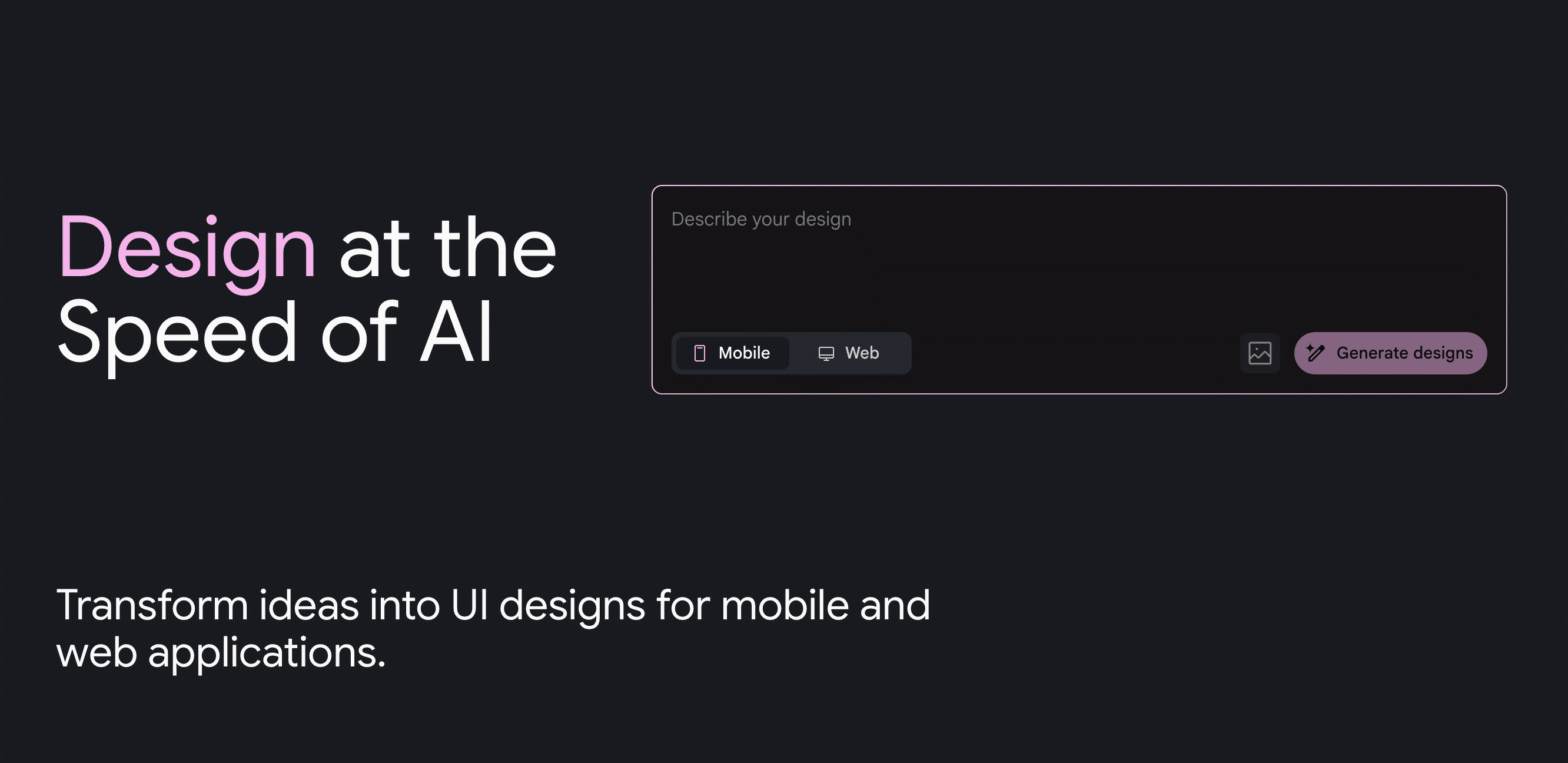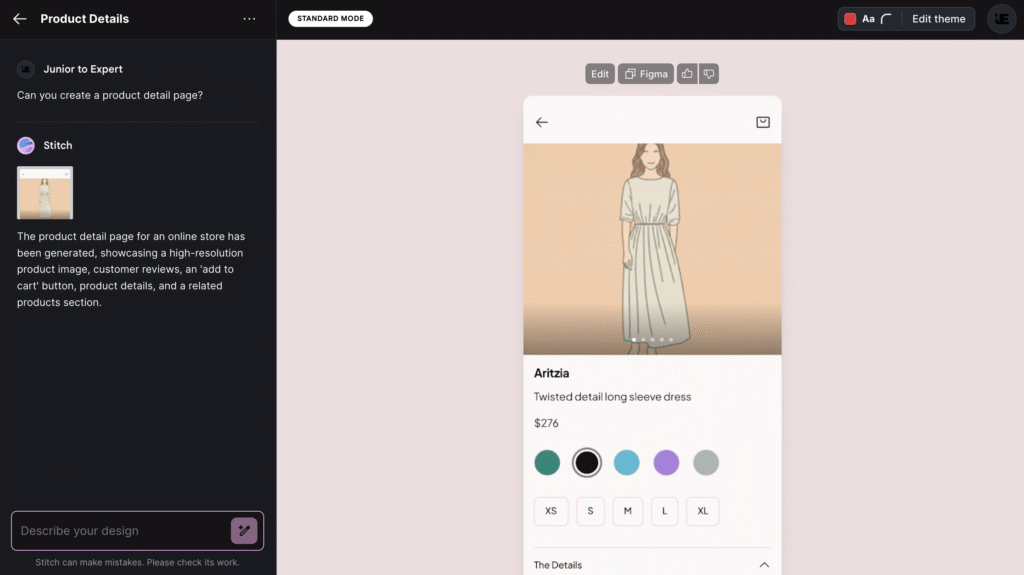AI Powered UI Tool Google Stitch
21/05/2025

Google Stitch is a new experimental AI tool developed by Google Labs that simplifies and accelerates creating user interfaces (UI) and front-end code. It’s designed to assist developers and designers by automating tasks that traditionally require significant manual effort and specialized knowledge.
Google Stitch Features
- AI-powered UI Generation: Stitch uses Google’s Gemini 2.5 Pro and Imagen models to generate complex UI designs from various inputs.
- Use natural language prompts: Describe the app or website you want to build in plain English, including details like layout preferences, color palettes, and desired user experience.
- Upload images: Provide sketches, wireframes, screenshots of other interfaces, or even rough design ideas, and Stitch will convert them into digital UI designs.
- Rapid Iteration and Design Exploration: Stitch allows users to generate multiple design variants, making it easy to experiment with different styles, layouts, and components. This helps in quickly exploring various design possibilities.
- Seamless Transition to Development: Once a design is finalized, Stitch provides crucial bridges to the development workflow:
- Paste to Figma: Designs can be directly pasted into Figma for further refinement, collaboration with design teams, and integration into existing design systems.
- Export front-end code: Stitch generates clean, functional front-end code (e.g., HTML and CSS) based on the design, allowing developers to quickly turn ideas into working applications.

Click the link (https://stitch.withgoogle.com/) for Google Stitch.
Evolution of Galileo AI
Stitch is an evolution of a previous Google AI experiment called Galileo AI, leveraging more advanced AI models like Gemini 2.5 Pro.
Galileo AI users have until June 20, 2025, to migrate their data to Stitch. Every user will receive migration instructions via email.
Is Stitch Free?
Stitch is available for free of charge with certain usage limits.
- 350 generations per month using “Flash mode”
- 50 generations per month using “Experimental mode”